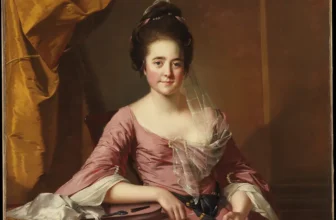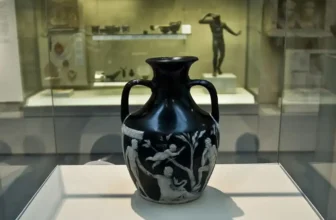The Untold Goldmine: Investing in the Forgotten Female Artists of the 1800s
The 19th century was a transformative period in art history. From the sweeping Romantic landscapes to the intricate details of Realism, the century witnessed an explosion of creativity. However, while male artists such as J.M.W. Turner, Édouard Manet, and John Constable have dominated the art market and historical narratives, the contributions of female artists have often been overlooked. Today, savvy art investors and collectors have a unique opportunity: the 19th-century female artist market is an untapped goldmine poised for growth.
Investing in 19th-century female artists isn’t just about correcting historical oversight, it’s about strategic portfolio diversification. Many of these artists produced masterpieces of equal technical and aesthetic merit to their male contemporaries, yet their works remain undervalued. This article explores the top female artists of the 19th century, identifies pieces under the radar, and offers insight into market trends that suggest these artworks are poised for significant appreciation.
Why Invest in 19th-Century Female Artists?
For decades, the art market has been heavily skewed toward male-dominated narratives. Auction houses, galleries, and collectors have historically prioritized male artists, leaving female artists of the 19th century undervalued and underrepresented. As a result, these works often present lower entry points for investors.
Investing in 19th-century female artists offers multiple advantages:
Market Undervaluation – Many works by women from this era are priced below comparable male artists of the same period and genre, providing attractive ROI potential.
Historical Significance – Collecting these works supports a more inclusive understanding of art history, highlighting the overlooked contributions of women.
Rising Collector Awareness – Increased interest in gender equity in the arts is driving demand for female artists, making early acquisition strategic.
Diversification – Adding works by underrepresented artists to a collection creates a unique portfolio, enhancing both aesthetic and investment value.
The combination of historical significance and market potential makes 19th-century female artists a compelling target for both seasoned and emerging collectors.
Top Female Artists of the 19th Century Worth Investing In
While numerous female artists deserve attention, a select few have consistently demonstrated both market growth potential and enduring artistic impact. Below is an in-depth look at these artists and why collectors should consider them.
1. Berthe Morisot (1841–1895)
A founding member of the Impressionist movement, Berthe Morisot’s work combines delicate brushwork with an innovative use of light and color. Despite her pivotal role in Impressionism, Morisot’s market value has historically lagged behind male counterparts like Monet and Renoir.
Why Invest:
Morisot’s paintings frequently explore domestic life, motherhood, and femininity, offering a unique perspective within the Impressionist canon. With growing scholarly attention and exhibition opportunities, her market is on the rise. Recent auctions have shown steadily increasing prices, suggesting that Morisot is poised for significant appreciation.
Key Pieces to Consider:
The Cradle (1872)
Summer’s Day (1879)
Young Girl Reading (1888)
2. Mary Cassatt (1844–1926)
An American expatriate in France, Mary Cassatt’s art is celebrated for its focus on women and children. She was heavily influenced by Japanese woodblock prints, and her work reflects a mastery of both composition and domestic intimacy.
Why Invest:
Cassatt’s auction prices have been steadily increasing, reflecting growing collector demand. Her unique position as a bridge between American and French art markets enhances her investment appeal. Additionally, Cassatt’s works are frequently included in major museum retrospectives, bolstering provenance and market confidence.
Key Pieces to Consider:
The Boating Party (1893–1894)
Young Mother Sewing (1900)
Mother and Child series
3. Eva Gonzalès (1849–1883)
A pupil of Édouard Manet, Eva Gonzalès carved out a distinct style that blends Impressionist light with Realist discipline. Her career was tragically cut short, but her extant works showcase technical brilliance and an ability to capture intimate, contemporary life.
Why Invest:
Gonzalès’ relatively small oeuvre and historical obscurity create scarcity in the market, an attractive factor for collectors. Her increasing presence in scholarly discourse and exhibitions is driving attention and price growth.
Key Pieces to Consider:
A Loge at the Theatre (1874)
Nanny and Child (1877)
The Artist’s Studio (1870s)
4. Elizabeth Thompson (Lady Butler) (1846–1933)
Known for her historical military scenes, Lady Butler defied the expectation that women painters should only depict domestic subjects. Her works are meticulous, dramatic, and historically significant, reflecting both artistic skill and narrative depth.
Why Invest:
Her large-scale canvases, though rarer in private collections, are highly sought after when they do appear on the market. Art historians increasingly recognize her contributions, and auction houses are responding with higher estimates, signaling market momentum.
Key Pieces to Consider:
The Roll Call (1874)
Scotland Forever! (1881)
Remnants of an Army (1879)
5. Marie Bracquemond (1840–1916)
Often overshadowed by contemporaries like Morisot and Cassatt, Marie Bracquemond was an innovative Impressionist who experimented with color and brushwork in bold ways. Her work ranges from domestic interiors to landscapes, reflecting a versatile talent.
Why Invest:
Bracquemond’s scarcity on the market and rising scholarly attention make her an undervalued gem. Collectors seeking under-the-radar investments can find both aesthetic and financial rewards in acquiring her pieces.
Key Pieces to Consider:
On the Terrace at Sèvres (1880)
Woman with a Parasol (1885)
The Artist’s Mother (1876)
Market Trends for 19th-Century Female Artists
The investment case for 19th-century female artists is strengthened by observable trends:
Rising Auction Prices – Works by female artists from this era have shown consistent annual appreciation, often outperforming broader market indices for lesser-known male contemporaries.
Increased Exhibition Visibility – Museums and galleries are dedicating exhibitions to women artists, enhancing provenance, recognition, and market value.
Collector Awareness and Advocacy – Socially conscious collecting, driven by gender equity awareness, is increasingly influencing demand. Investors and institutions alike are seeking to correct historical biases.
Scarcity and Historical Oversight – Many works by female artists remain in private collections or have yet to surface on the open market. Early acquisition opportunities are more plentiful now than they may be in a decade.
Strategies for Investing in 19th-Century Female Artists
For art investors seeking to capitalize on this underexplored market, several strategies are recommended:
1. Focus on Provenance and Exhibition History
Given the historical undervaluation of female artists, works with clear provenance or exhibition history provide security and potential for appreciation. Museums increasingly seek to display works by women, and having documented provenance enhances a piece’s investment profile.
2. Target Undervalued Works
Many 19th-century female artists are underrepresented in the market. Works that are less iconic, such as intimate portraits or domestic scenes, often have lower entry prices but strong long-term potential.
3. Leverage Scholarly Research
Investors who study catalogues raisonnés, art historical publications, and recent academic exhibitions gain insight into artists likely to gain recognition. Awareness of emerging scholarship can identify undervalued works before the market catches on.
4. Consider Condition and Rarity
Condition is critical for long-term value. Many 19th-century female artists produced smaller, less preserved works, so identifying pieces in excellent condition or rare compositions can offer superior ROI.
Masterpieces Under the Radar
While major works by Morisot, Cassatt, and Lady Butler are already gaining traction, lesser-known female artists and overlooked works present exceptional opportunities:
Fanny Churberg (1845–1892) – Finnish painter known for bold landscapes that rival male contemporaries.
Louise Abbéma (1853–1927) – Celebrated portraitist whose works are slowly gaining international recognition.
Camille Claudel (1864–1943) – Though primarily recognized as a sculptor, early 19th-century drawings and small-scale works remain underrepresented in private collections.
Acquiring such “under the radar” pieces allows investors to capitalize on both aesthetic and financial value before the broader market recognizes their significance.
Risks and Considerations
Like all art investments, 19th-century female artists carry certain risks:
Market Volatility – While undervalued works can offer upside, prices can fluctuate with changing trends.
Authentication Challenges – Historical oversight means fewer documented works, so rigorous authentication is critical.
Liquidity – Female artists’ works may have lower immediate market liquidity, necessitating long-term investment horizons.
By mitigating these risks through careful research, provenance verification, and strategic acquisition, investors can position themselves for both cultural and financial gains.
A Golden Opportunity
The 19th century produced a remarkable cohort of female artists whose talent, vision, and innovation rivaled that of their male peers. Today, these works remain undervalued, creating a unique opportunity for discerning collectors and investors. By focusing on key figures such as Berthe Morisot, Mary Cassatt, Eva Gonzalès, Lady Butler, and Marie Bracquemond, and exploring overlooked masterpieces under the radar, investors can diversify their portfolios while contributing to a more inclusive understanding of art history.
The market for 19th-century female artists is on the cusp of recognition. With rising auction prices, increasing exhibition visibility, and growing scholarly attention, early investment in these artists is not just a matter of ethical collecting, it is a strategic financial decision. For investors seeking untapped potential, 19th-century female artists represent an untold goldmine, offering both aesthetic delight and promising market growth before the broader art world fully catches on.




